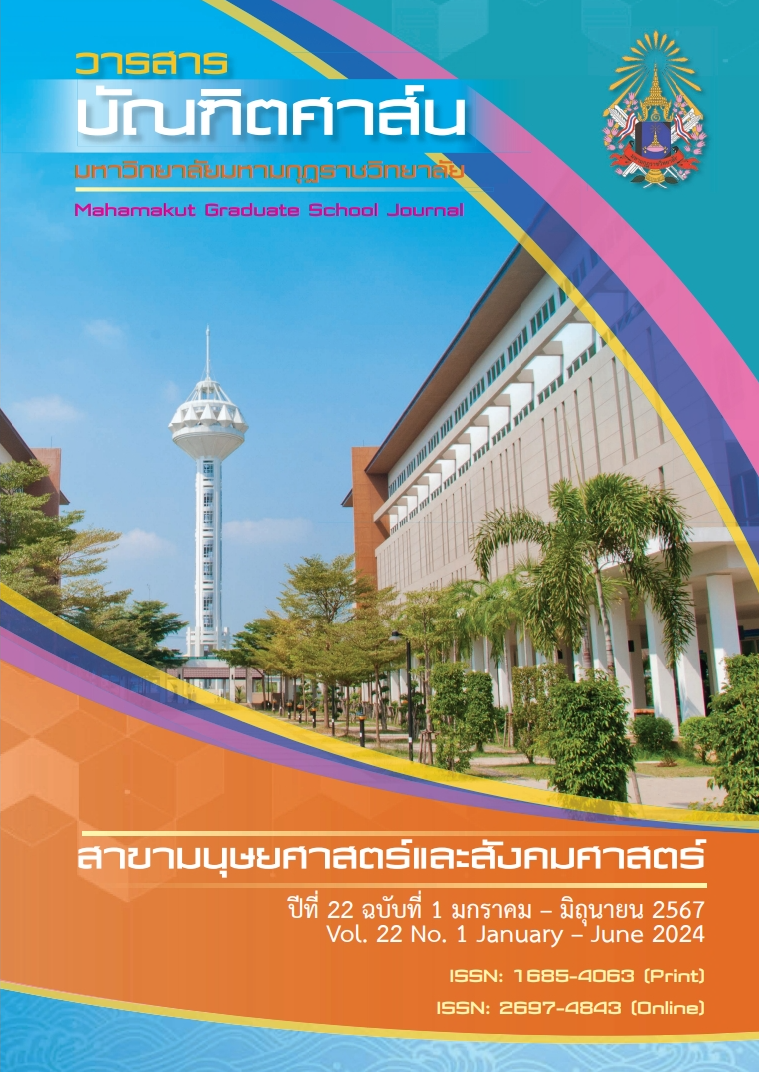Artistic Conception and Emotions of Jiangnan Gardens in Imagery Oil Paintings
คำสำคัญ:
Oil painting of imagery, Jiangnan Garden, Context, Emotion,Oil Painting Nationalizationบทคัดย่อ
The art of oil painting, which originated in Europe, has been developed in China for more than 400 years since it was introduced to China in the Ming Dynasty. As one of the most popular types of paintings in the world, oil painting has undergone the development and renewal of several generations of Chinese oil painters, who have continuously explored a road of oil painting with Chinese characteristics. Since the 1950s and 1960s, when the "nationalization of oil painting" was proposed, Chinese oil painting has gradually formed a style of imaginative oil painting, which mainly focuses on writing, through the exploration of many oil painters. As a representative of ancient Chinese garden art, Jiangnan Garden, with its unique garden design method and concept, contains the highest pursuit of aesthetic spirit of ancient Chinese intellectuals. Jiangnan garden is an important heritage of world culture. Therefore, how to express Jiangnan gardens becomes a good entry point for imagery oil painting. Through analysis, this paper explores the Chinese understanding and pursuit of aesthetics in imaginative oil painting, the intrinsic connection between Jiangnan gardens and contemporary oil paintings, especially how to express the mood and embodied emotions in Jiangnan gardens through oil paintings. In order to provide useful inspiration for oil painters.
เอกสารอ้างอิง
Chen Congzhou. Say garden [M]. Shanghai: Tongji University Press, 1994.
Deng Qingming. Cultural Connotation of Imagery Oil Painting Language[J]. Art Observation, 2015(9):96-97
Ding Ning. On Architectural Field [M]. Beijing: China Construction Industry Press, 2010.
Han Biao. Analyzing the Implications of Traditional Painting Language in Chinese Contemporary Imagery Oil Painting [J]. Popular Literature and Art, 2016(12).
Hong Xinfa. Contemporary Oil Painting Localized Thinking Initial Exploration-Introduction to Chinese Oil Painting Imagery Expression and Aesthetics[J]. Journal of Hubei Normal College (Philosophy and Social Science Edition), 2015, (04): 87-88.
Hou Youbin. Aesthetics of Chinese Architecture [M]. Beijing: China Architecture Industry Press, 2009.
Liu Dunzhen. Suzhou Classical Gardens [M]. Beijing: China Architecture Industry Press, 2005.
Luo Zhewen, Wang Zhenfu. Chinese architectural culture [M]. Beijing: Peking University Publishing House, 2001.
Sheng Zhong. Jiangnan garden mood [M]. Shanghai: Jiaotong University Press, 2009.
Pan Gongkai. Reticulosity - a point of contact between future Chinese oil painting and traditional Chinese culture[J]. Chinese Oil Painting, 2015, (09): 77-80.
Qi Jiang. The Intentionality Factor of Chinese Contemporary Oil Painting's Reference and Innovation to Chinese Painting and Calligraphy[J]. Art Education Research, 2016,(01):187-188.
Yuan Guanxiang. Discussion on the national cultural connotation and poetic charm of imagery oil painting [J]. Art Science and Technology, 2015(3):102-102.
Zhou Weiquan, History of classical Chinese gardens (M). Beijing:Tsinghua University Press,1999.
ดาวน์โหลด
เผยแพร่แล้ว
รูปแบบการอ้างอิง
ฉบับ
ประเภทบทความ
สัญญาอนุญาต
ลิขสิทธิ์ (c) 2024 มหาวิทยาลัยมหามกุฏราชวิทยาลัย

อนุญาตภายใต้เงื่อนไข Creative Commons Attribution-NonCommercial-NoDerivatives 4.0 International License.
บทความวิชาการและบทความวิจัยในวารสารฉบับนี้ถือเป็นความรับผิดชอบของผู้เขียนเท่านั้น บทความที่ได้รับการตีพิมพ์ในวารสารบัณฑิตศาส์น ถือเป็นลิขสิทธิ์ของมหาวิทยาลัยมหามกุฏราชวิทยาลัย ตามพระราชบัญญัติลิขสิทธิ์



